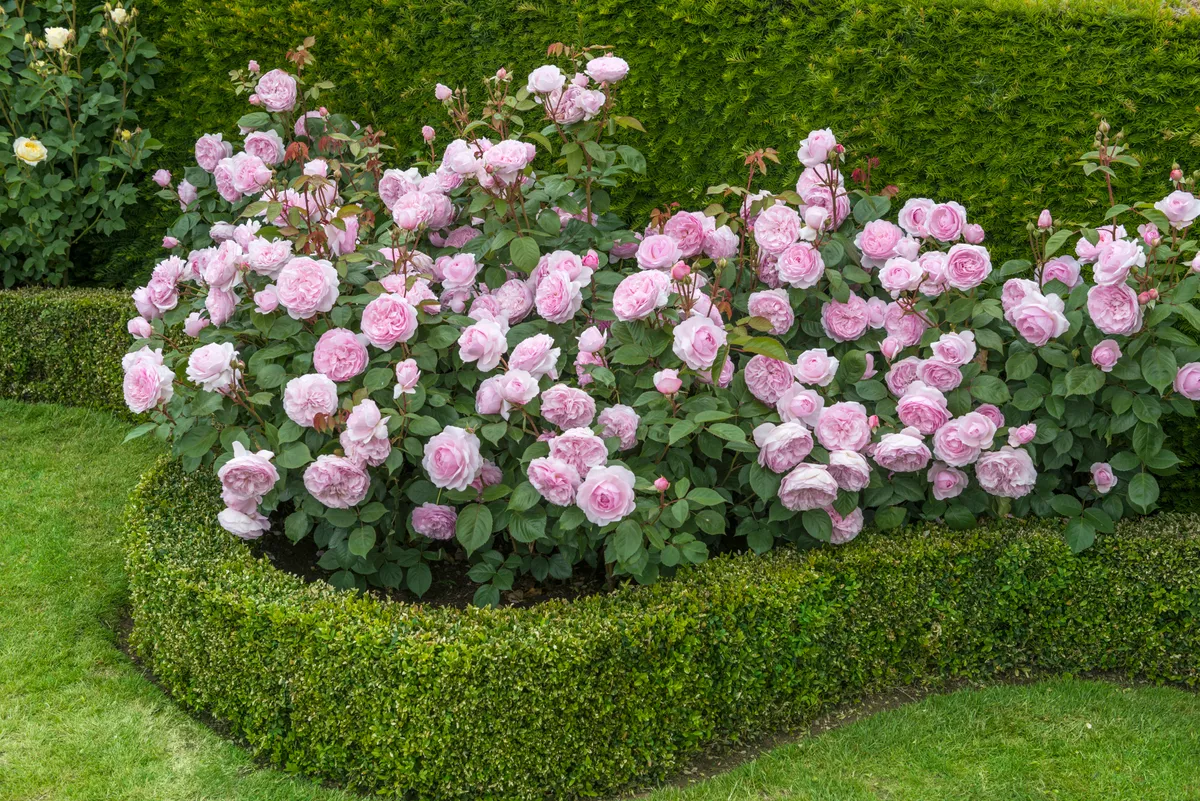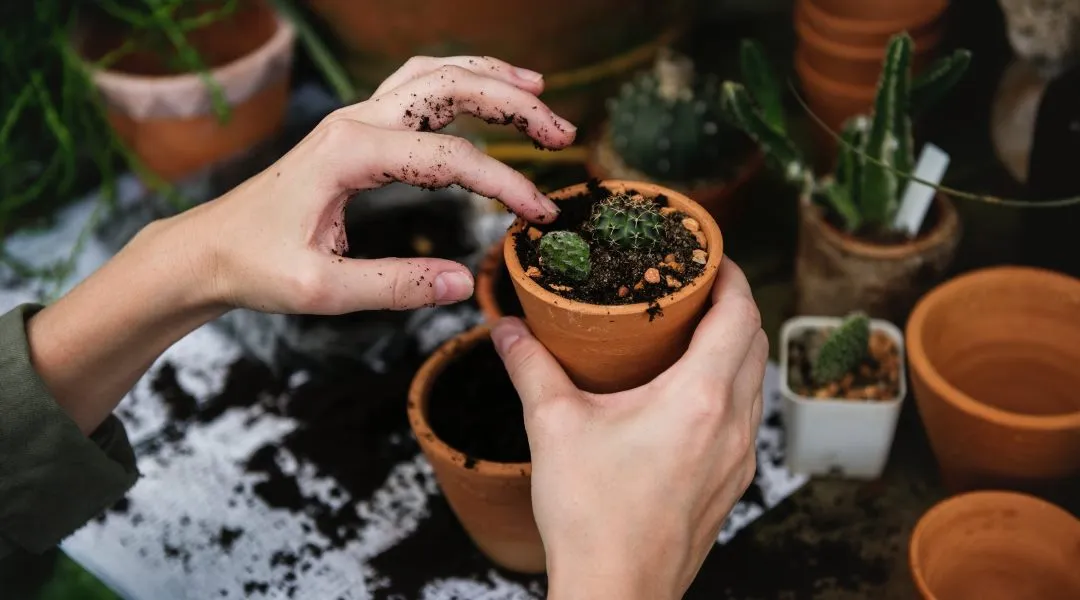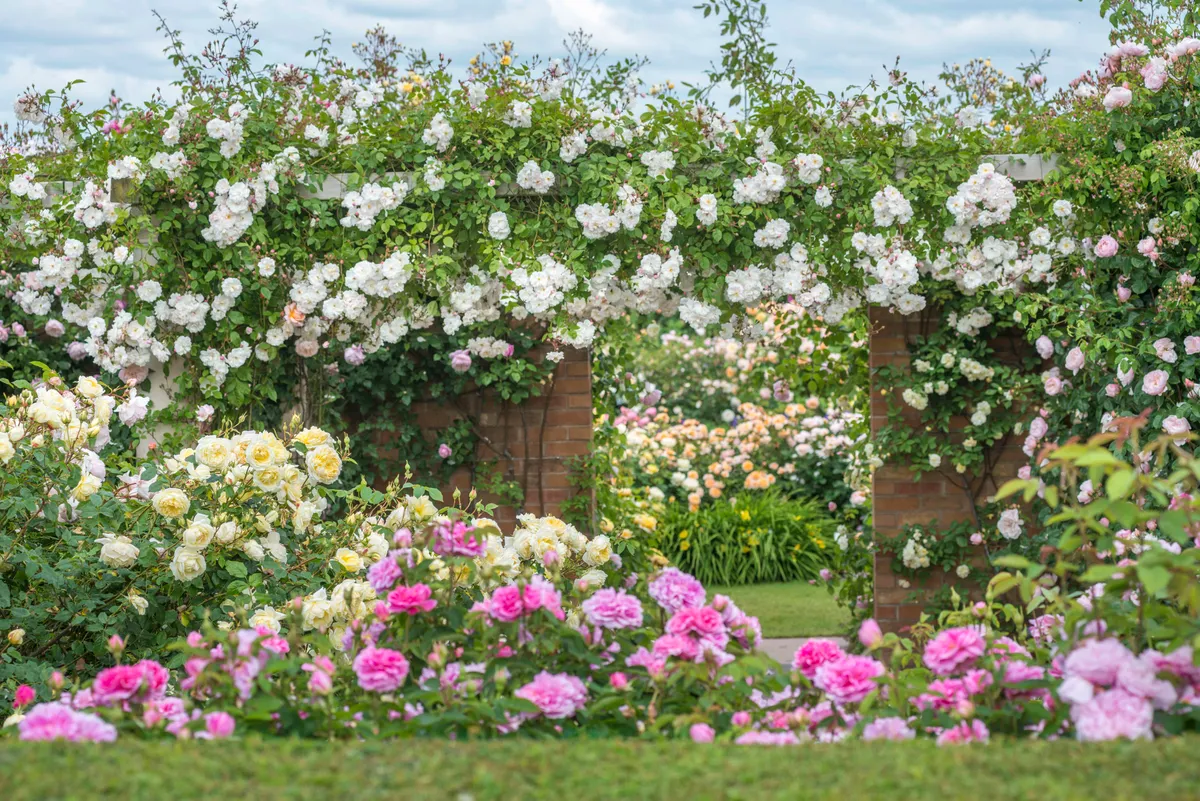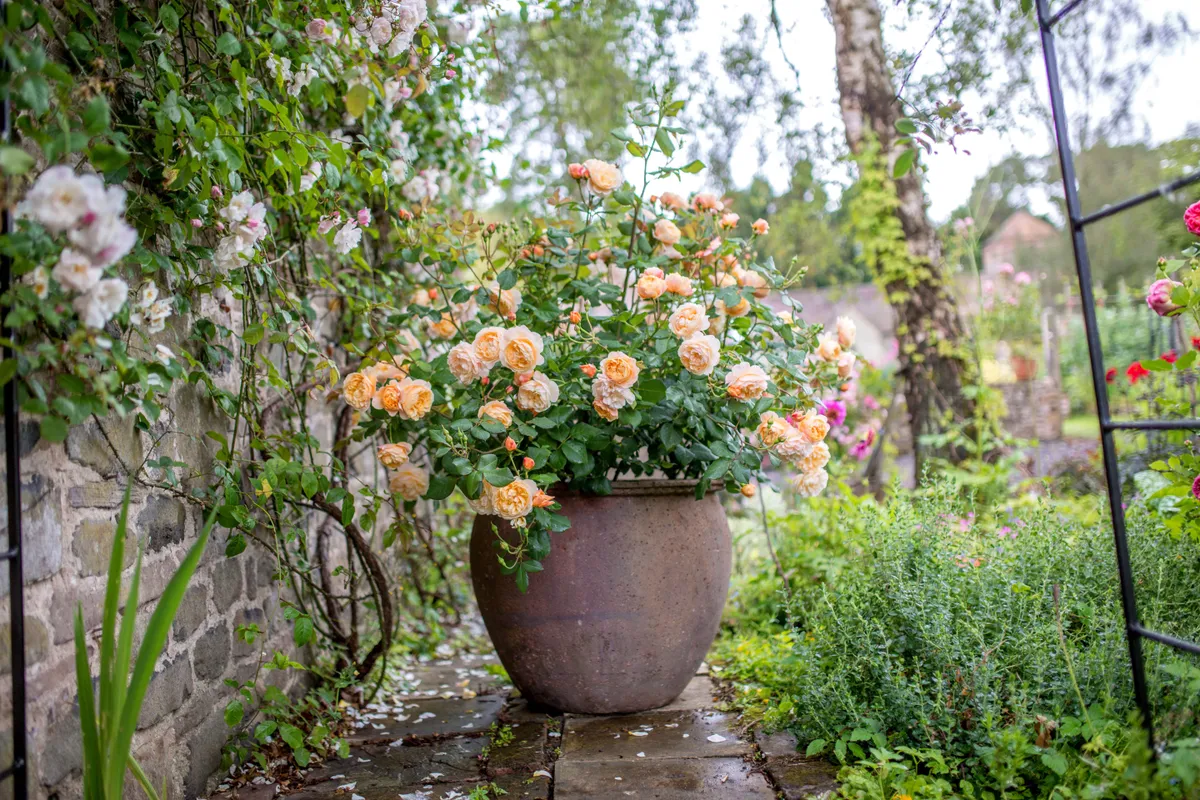If you dream of a charming, blossoming outdoor space filled with colour and heavenly scents, a rose garden is for you. We asked experts David Austin Roses for their top tips on how to grow and maintain a flourishing rose garden. Whether you have a country garden or a city balcony to work with, these tips will help you on your way to becoming a rose aficionado!
How to make a rose garden
Roses have so many uses. They look great with grasses in large drifts and are superb with almost any 'cottage style' perennials. They also look wonderful grown as large specimens in a wild meadow or grown on large pergolas, arches, trellises or obelisks.
If you're short on space, or have a patio, balcony or roof terrace, you can grow roses in pots. They really are one of the most diverse and adaptable plants you can buy.
You can create a high impact rose garden by planting large blocks of the same variety together to form a mass of blooms completely covering the soil and giving a real wow factor to your garden, rather like the traditional rose gardens of the 60s. Or, you can make an interesting border in a small garden with just a few roses with complementary perennials.
If you have the space, you could try a formal rose garden with four square beds surrounding a central feature such as a water feature, a garden sculpture or a sundial for example with arches or pergolas across the paths. Each border could have the same roses or different ones, it's such an adaptable and simple design to create in a large or medium-sized garden. To finish off the formality of the garden you may wish to edge the borders with a low lavender, yew box or similar type of low hedging plant.
How to plant roses
Roses grow well on humus-rich; moisture-retentive soil so good ground preparation is one of the secrets of a successful new rose garden. Take your time getting it right and you are almost guaranteed to succeed.
For planting, you will need a good strong garden spade and fork and a good supply of well-rotted animal manure or soil improver as you will need to dig the whole area deeply incorporating the humus into the lower portion of the soil well before planting to allow the soil to settle.
The space you will need to plant your roses is really down to the size of your garden, however, always remember any new area or border must fit in with the overall size of the garden. If you have a large garden and large house, you will need a large area or it will look very out of place.
To make a formal rose garden as described in the previous section, the minimum area you'll need to plant in should be roughly 7m x 7m.
How to create a rose border

When planting a mixed border of roses and perennials never overcrowd the roses, especially when they are young, or they will struggle to thrive. Never plant any perennial closer than 50cm from the centre of the roses. Ideally, plant the roses during winter and let them establish for a whole growing season then plant the perennials. The long-term benefit of this is well worth the wait. It's also recommended to plant most rose varieties in groups of three of the same variety to create a much more impressive finish.
Where is best to plant roses?
The English shrub roses are very tolerant of shade generally, but they and all other roses appreciate at least four hours of sun during the growing season (April to October). They also like plenty of general light, but what they do not like is deep shade. They struggle under the canopy of large trees and in areas where there is no sun at all. If you choose an area with morning sun and afternoon shade, especially in hot locations in an open and airy spot, you'll be rewarded with happy and healthy roses.
More garden inspiration
- Victorian garden ideas: how to create the classic garden look at home
- How to create a bee-friendly garden
- Wildflower meadow ideas: how to create a wild garden at home
- Eco garden ideas: 5 tips for an environmentally friendly space
- Hedgerow plants: best evergreen hedges for privacy around your home and garden

How to look after roses
Roses are hungry plants but are easy to maintain, needing a couple of feeds a year in spring and summer with a high quality rose food, a mulch of well-rotted humus in the spring to replenish the soil’s energy and to help keep the soil moist and the roots cool. Finally, an annual prune just after Christmas will help to encourage new growth, create an attractive shape and to remove any old or dead stems. When they are young and still establishing themselves they appreciate a regular drink of water. During the first flush of flowers, remove the finished flowers as this will helps to encourage more flowers later.
What’s the difference between a rambling rose and a climbing rose?

This is a very common question! It's all to do with the way the plants grow and their flower size. Ramblers, as the name suggests, tend to be more flexible and they generally produce small flowers in large clusters. They have a lovely relaxed informal look, as shown above. Traditionally, the ramblers only flower once a season in the summer and can grow very large indeed. However, recent work by a number of breeders has produced a small but very useful range of smaller repeat flowering varieties ideal for a small or medium-sized garden.
Climbers on the other hand tend to have much stiffer growth with large flowers and the majority flower at least twice a year. Most modern climbers are ideal to grow onto your house or on many types of standard garden structures. Climbing roses are best for walls, trellises, arches and obelisks, whereas rambling roses are generally better for growing into trees and covering pergolas or large structures such as garages or sheds.
Can you grow roses in small gardens and/ or in containers?

As touched upon earlier, there are many roses that will fit into small gardens and work well in containers. When growing in containers, always ensure you use large pots with a minimum of 45cm in depth and width and use a mix of good quality topsoil and multi-purpose compost. Ensure the pots drain well by adding a layer of drainage material in the base of the pots, such as pebbles, and make sure the pots have plenty of drainage holes in the bottom.
For more rose garden inspiration and planting ideas, visit davidaustinroses.co.uk
